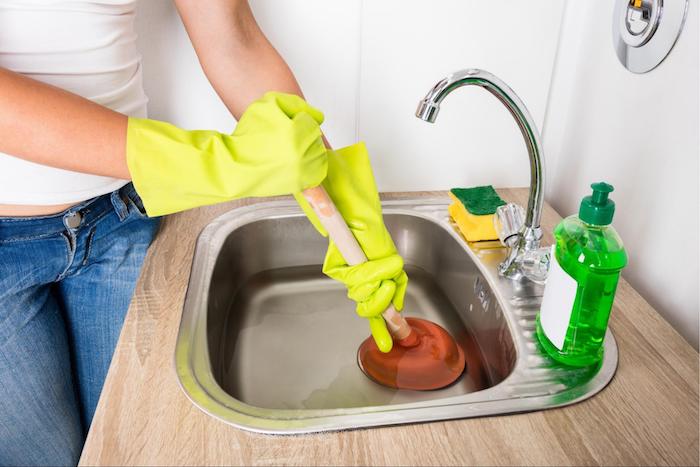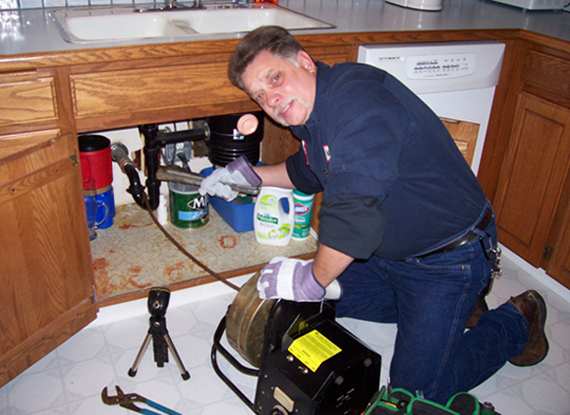Waterlogged And Wondering Why - 6 Causes For Your Kitchen Sink's Slow Drain
Waterlogged And Wondering Why - 6 Causes For Your Kitchen Sink's Slow Drain
Blog Article
Just about every person maintains their personal rationale about What To Do When Your Kitchen Sink Won’t Drain.

It's not regular for your cooking area sink to block multiple times in one month. If your sink blocks twice a week, there's some difficulty going on.
An obstructed kitchen area drainpipe does not simply reduce your chores, it degrades your entire plumbing system, bit by bit. Right here are some typical routines that motivate sink obstructions, and also just how to prevent them.
You require correct garbage disposal
Reusing waste is wonderful, yet do you take notice of your natural waste also? Your kitchen area ought to have two separate waste boxes; one for recyclable plastics and also an additional for natural waste, which can come to be garden compost.
Having actually a marked trash can will certainly assist you as well as your household prevent throwing pasta and other food remnants down the drain. Typically, these remnants soak up dampness and also come to be blockages.
The fault isn't from your kitchen area sink whatsoever
Maybe the problem isn't from your cooking area sink, yet the whole drain system. In such a situation, you may notice that sinks and also drains pipes get clogged every other week. You require a specialist plumbing solution to fix this.
You're throwing coffee down the drain
Made use of coffee premises as well as coffee beans still absorb a significant quantity of wetness. They may seem little sufficient to throw down the drain, but as time takes place they start to swell and take up even more area.
Your coffee grounds need to enter into organic waste disposal. Whatever portion escapes (probably while you're depleting) will be cared for during your monthly cleaning.
You have actually been eating a great deal of greasy foods
Your kitchen sink might still get blocked despite having organic garbage disposal. This might be because you have a diet regimen abundant in greasy foods like cheeseburgers.
This oil coats the within pipes, making them narrower and also even more clog-prone.
Utilize a plunger
Your pipeline wasn't fixed effectively to begin with
If you've been doing none of the above, yet still obtain regular obstructions in your cooking area sink, you should call a plumber. There might be a trouble with exactly how your pipelines were installed.
While your plumber shows up, look for any type of leakages or irregularities around your kitchen area pipelines. Don't try to fix the pipes on your own. This may trigger a crash or a kitchen flooding.
Someone tried to clean their hair in the kitchen sink
There's a right time and also place for whatever. The cooking area sink is just not the best area to clean your hair. Washing your hair in the kitchen area sink will certainly make it clog eventually unless you make use of a drain catcher.
While a drain catcher may capture most of the after effects, some hairs might still get through. If you have thick hair, this may suffice to reduce your drainage and ultimately create an obstruction.
There's more dirt than your pipelines can take care of
If you obtain fruits straight from a farm, you may observe even more cooking area dirt than other people that shop from a shopping center. You can conveniently repair this by cleaning the fruits and veggies correctly before bringing them right into your house.You require proper waste disposal
My Kitchen Sink Won’t Drain - What Should I Do?
If Your Sink Has a Garbage Disposal...
Turn on the disposal. If the disposal hums and doesn’t turn, then there’s clog in the disposal unit.
Go to your circuit breaker panel, and switch off the circuit breaker to your garbage disposal.
Back in your kitchen, double-check that your garbage disposal is off by trying to turn it on. The disposal should not move, and it should not make any noise.
Lie down underneath your sink so that you can see and access the bottom of the disposal unit. Look for a hole that looks like the head of a hex-head bolt in the center of the unit.
Place an Allen wrench inside this hole and turn it from side to side until you feel a decrease in resistance and are able to rotate the wrench completely in a single direction. This action rotates your disposal’s blade manually.
Put the wrench aside, and press the disposal unit’s reset button or switch.
Flip your garbage disposal’s circuit breaker switch back on, and turn on the unit to see if the obstruction has cleared. If it hasn’t, repeat the steps above until the obstruction is removed.
How to Unclog a Kitchen Sink Drain
If you have a double bowl sink, seal one side of the sink with an airtight lid or a second plunger before plunging the other side. Otherwise, you won’t be able to create adequate suction.
Place the cup of the plunger completely over the drain opening.
Turn on the faucet, and let the water run until it completely covers the cup of the plunger.
Start plunging by pushing the plunger down and pulling up again in order to build up suction. Make sure that the edges of the plunger stay in contact with your sink, or else you’ll lose the suction.
If you have trouble forming a seal between your sink and plunger, add petroleum jelly to the mouth of your plunger, and try again.
Plunge about five or six times before removing the plunger to see if water starts to drain properly. In some cases, you’ll even be able to feel the clog become dislodged while you plunge because suddenly there will be much less resistance. Repeat the plunging process until the clog clears.
Once water is draining properly again, run hot water down the drain for 5 minutes to help clear away grease, grime, and debris from the clog. https://www.plumbingjoint.com/blog/2019/august/my-kitchen-sink-won-t-drain-what-should-i-do-/

My Kitchen Sink Won’t Drain - What Should I Do?
If Your Sink Has a Garbage Disposal...
How to Unclog a Kitchen Sink Drain
https://www.plumbingjoint.com/blog/2019/august/my-kitchen-sink-won-t-drain-what-should-i-do-/
Do you really like reading about Five Ways to Fix a Slow Sink Drain? Put feedback down the page. We will be pleased to know your thinking about this write-up. We are looking forward that you come back again later on. Do you know about somebody else who is enthusiastic about the niche? Why not share it. We love reading our article about Why Is My Sink Not Draining?.
Contact Us
Report this page